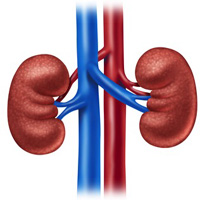Papillary vs non-papillary access during percutaneous nephrolithotomy: Retrospective, match-paired case-control study

Accepted: November 13, 2019
All claims expressed in this article are solely those of the authors and do not necessarily represent those of their affiliated organizations, or those of the publisher, the editors and the reviewers. Any product that may be evaluated in this article or claim that may be made by its manufacturer is not guaranteed or endorsed by the publisher.
Objective: The most crucial steps of percutaneous nephrolithotomy (PCNL) are the percutaneous access and dilation of the access route. Recent literature suggests that papillary access to renal calyx is the accepted method. Despite this rule, we do not always make papillary puncture and we puncture wherever we can to achieve stone-free status and reduce unnecessary access. In this study, we present our results with papillary vs non-papillary access in patients with a kidney stone.
Material and methods: Two hundred and seven patients with non-papillary access and 69 patients with papillary access who had similar demographics (age, body mass index (BMI), stone size) were selected with pair match analysis (3:1). Preoperative and postoperative data were collected from the patient's chart. Operative time (from starting surgery to nephrostomy tube), drop-in hematocrit level, transfusion rate, duration of hospital stay, perioperative and postoperative complications (Clavien-Dindo Classification) and stone-free status (no or < 3 mm residual stone) were also evaluated in both groups.
Results: The mean operative time was similar in between two groups. The mean hematocrit decreases not differ between the two groups (p = 0.56). In papillary group, only 2 patients (3.2%) required transfusion and only one patient (1.4%) in the non-papillary group had a transfusion with no statistically significant difference (p = 0.43). The overall complication rates were 7.1% in the papillary group and 7.2% in the non-papillary group (p = 0.89). Postoperative mean creatinine level was similar between the two groups.
Conclusions: In this study, we found that non-papillary access is a feasible option for PCNL in the terms of stone-free status and complication rates.
PAGEPress has chosen to apply the Creative Commons Attribution NonCommercial 4.0 International License (CC BY-NC 4.0) to all manuscripts to be published.


 https://doi.org/10.4081/aiua.2020.1.50
https://doi.org/10.4081/aiua.2020.1.50



